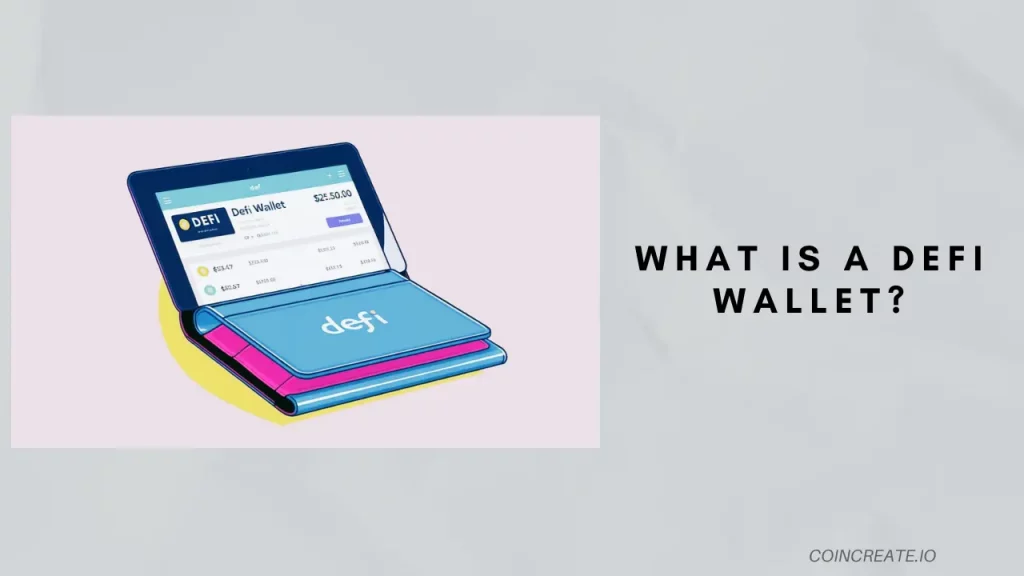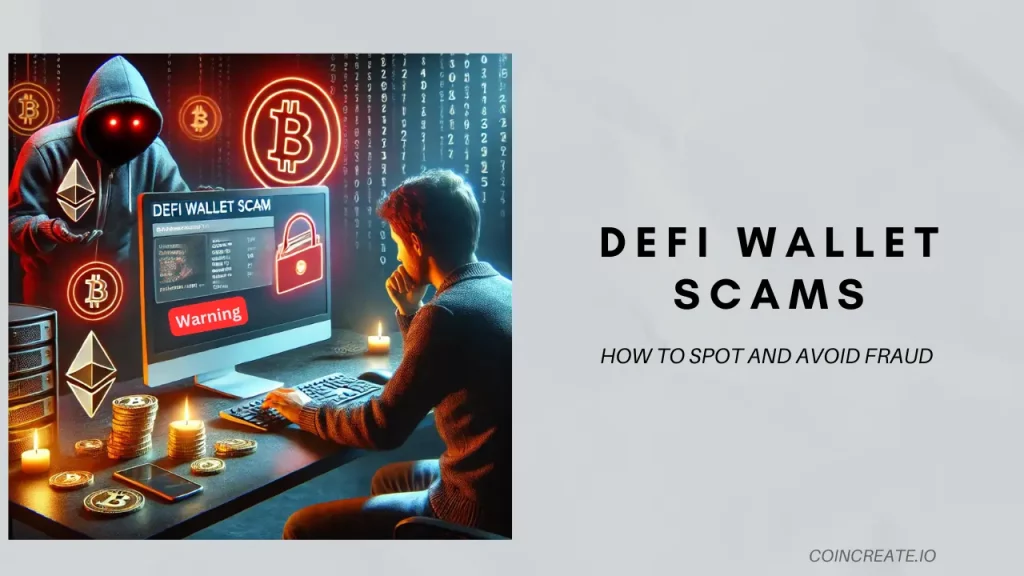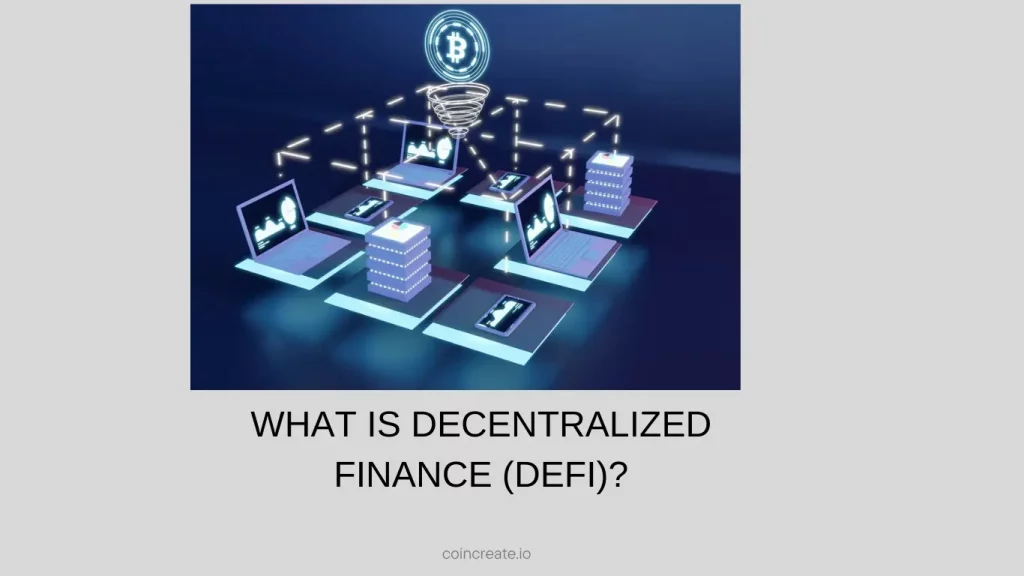What Is a DeFi Wallet and How Does It Work?
Ever heard the phrase, “Be your own bank?” That’s the heart of what DeFi wallets are all about. In the world of cryptocurrency, a DeFi wallet isn’t just a place to store your digital coins; it’s your passport to a whole new financial system. Let’s break down what a DeFi wallet is, how it works, and why you might seriously consider using one.

What Exactly is a DeFi Wallet?
Think of a traditional wallet. It holds your cash, right? A DeFi wallet does the same thing, but for your cryptocurrencies. However, there’s a HUGE difference. With a traditional bank, the bank controls your money. With a DeFi wallet, you are in charge. No middleman, no bank hours, just you and your crypto.
- The Core Idea: A DeFi wallet lets you store, manage, and use your digital assets without needing a central authority like a bank.
- Self-Custody is King: This means you and only you have control over your private keys the super-secret code that unlocks your crypto treasure chest. This is the essence of “Not your keys, not your crypto.”
Key Features: What Makes DeFi Wallets So Special?
So, what sets DeFi wallets apart from the crowd? Here’s the inside scoop:
- You’re in the Driver’s Seat (Non-Custodial Nature): This is the big one! You, and only you, have access to your private keys. No one can freeze your account or tell you what you can and can’t do with your money. This is crucial for protecting your assets from being seized or controlled by external entities. Think of it as owning the keys to your own digital vault.
- Plays Well With Others (Interoperability): DeFi wallets aren’t walled gardens. They can seamlessly connect to different DeFi platforms and blockchains, like Ethereum or Binance Smart Chain. It’s like having a universal adapter for the entire DeFi world, allowing you to explore different opportunities without restriction.
- A Gateway to a Universe of Services (Access to DeFi Services): DeFi wallets aren’t just for holding crypto. They’re your ticket to a universe of financial activities like lending, borrowing, trading, yield farming, and a whole lot more, all accessible right from your wallet’s interface. Imagine having a Swiss Army knife for your crypto finances.
- Fort Knox-Level Security (Enhanced Security): When you control your own keys, your assets are generally much safer from hacks than if they were sitting on a centralized exchange. You’re in charge of your own security, which means you can take proactive steps to protect your funds. It is like having your own personal cybersecurity team guarding your assets.
How Does a DeFi Wallet Actually Work?
Okay, let’s get a little bit technical, but I promise to keep it as simple as possible. DeFi wallets work by interacting with something called smart contracts on blockchain networks. Think of smart contracts as digital agreements that automatically execute when certain conditions are met. They’re the building blocks of decentralized applications.
- Signing on the Digital Dotted Line (Transaction Signing): When you want to perform an action (like sending crypto to a friend), your wallet creates a unique digital signature using your private key. This signature acts as proof that it’s really you authorizing the transaction. It is like having a digital ID card that only you can use.
- Broadcasting to the World (Executing Transactions): Your signed transaction gets broadcast to the blockchain network (like Ethereum or Binance Smart Chain). The network then verifies that your signature is valid and that you have enough funds to complete the transaction. If everything checks out, the transaction is added to the blockchain, making it permanent and unchangeable.
- Paying the Blockchain’s Bills (Gas Fees): Every transaction on a blockchain requires a bit of computing power, which costs money. These costs are known as “gas fees”. Think of them as a small transaction fee to compensate the network for processing and validating your transaction. Make sure you have enough crypto in your wallet to cover these fees, or your transaction might get stuck.
Hot vs. Cold: What Kind of DeFi Wallet is Right for You?
DeFi wallets come in a few different flavors. The main distinction between them is whether they’re “hot” or “cold.” Think of it like this:
Hot Wallets: Always Ready to Go
Hot wallets are like keeping some cash in your physical wallet for everyday expenses. They’re connected to the internet, making them easily accessible for frequent transactions.
- Pros: Extremely convenient, perfect for daily use, easy access to dApps (Decentralized Applications).
- Cons: More vulnerable to hacking attempts since they’re always online.
Examples:
- MetaMask: A hugely popular browser extension and mobile app, perfect for interacting with Ethereum and other compatible blockchains.
- Trust Wallet: Binance’s official mobile wallet, supporting tons of different cryptocurrencies and providing a user-friendly experience.
| Feature | MetaMask 🚀 | Trust Wallet 📱 | Ledger Nano X |
|---|---|---|---|
| Wallet Type | Hot Wallet | Hot Wallet | Cold Wallet |
| Security | Medium | Medium | High (Offline Storage) |
| Private Key Control | Full Control | Full Control | Full Control |
| Supported Blockchains | Ethereum, BNB Chain, Polygon, Avalanche, Arbitrum, Optimism | 70+ Blockchains (Ethereum, BNB Chain, Solana, Avalanche, etc.) | 5,500+ Cryptocurrencies |
| Best For | DeFi Trading, dApps, Web3 Access | Mobile Users, Multi-Chain Support | High-Security Storage, Long-Term Investors |
| Ease of Use | Beginner-Friendly | Very Easy | Moderate (Requires Setup) |
| dApp Integration | Yes (Uniswap, OpenSea, Aave, etc.) | Yes (1inch, PancakeSwap, etc.) | No (Requires MetaMask Integration) |
| NFT Support | Yes (Ethereum & EVM-Compatible Chains) | Yes (Multi-Chain) | Yes (Through MetaMask & External Apps) |
| Staking & Yield Farming | No Built-in Staking (Requires dApps) | Yes (Built-in Staking) | Yes (Through Ledger Live) |
| Hardware Wallet Compatibility | Yes (Ledger & Trezor Integration) | No | Yes (Built-in) |
| Transaction Fees | Variable (Depends on blockchain) | Variable (Depends on blockchain) | Low (More secure transactions, requires device confirmation) |
| Availability | Browser Extension, Mobile App | Mobile App | Hardware Device (Bluetooth + USB) |
| Best For Beginners? | Yes | Yes | No (Best for Advanced Users) |
Cold Wallets: The Ultimate in Security
Cold wallets are like storing gold in a secure vault. They’re kept offline, offering the highest level of security for your digital assets.
- Pros: Super secure, ideal for long-term storage of large amounts of crypto, virtually immune to online hacking.
- Cons: Less convenient for frequent transactions since they require more steps to use.
Examples:
- Ledger: A hardware wallet known for its robust security features and support for a wide range of cryptocurrencies.
- Trezor: Another highly reputable hardware wallet that offers excellent security and supports multiple cryptocurrencies.
Paper Wallets: These are physical documents containing both public and private keys. While offering very high security, they are not convenient for regular transactions.
Why Bother with a DeFi Wallet? The Amazing Perks
So, why should you even consider using a DeFi wallet? Here are some compelling reasons that might change your mind:
- You’re the Captain Now (Financial Autonomy): No more asking permission from banks or worrying about your account being frozen. With a DeFi wallet, you have direct control over your assets. You’re the boss!
- Impenetrable Security (Enhanced Security): When you are in control of your private keys, you’re significantly less vulnerable to hacks compared to keeping your crypto on an exchange. You are your own security system.
- Trustless Transactions: Smart contracts handle your transactions automatically, so you don’t have to trust a middleman or third party.
- Global Accessibility: Access your crypto and DeFi services from anywhere in the world, 24 hours a day, 7 days a week. This opens up financial opportunities regardless of your location.
- Lower Fees: Generally, you’ll encounter lower transaction costs compared to traditional financial institutions or centralized platforms.
- Make Your Crypto Work Harder for You (Yield Generation): DeFi wallets enable you to participate in lending, staking, and yield farming, which can earn you rewards on your crypto holdings. Turn your idle assets into income-generating machines
Top 3 DeFi Wallets in 2025: Our Expert Picks
Choosing the right DeFi wallet can feel a bit overwhelming, especially with so many options available. Here are three of the most popular and well-regarded options to get you started:
- MetaMask: The go-to wallet for Ethereum and other EVM-compatible blockchains. It’s incredibly versatile and widely used, with tons of dApp integrations. Think of it as the Swiss Army knife of DeFi wallets.
- Trust Wallet: Excellent for mobile users who want a user-friendly experience. It supports a wide range of cryptocurrencies and seamlessly integrates with Binance’s ecosystem.
- Ledger: For uncompromising security, the Ledger hardware wallet is an excellent choice. It stores your private keys offline, protecting them from online threats.
Honorable Mention: Phantom Wallet is another standout choice, particularly if you’re active in the Solana ecosystem.
Can You Actually Sell Crypto from a DeFi Wallet?
Yes, you can absolutely sell crypto that’s stored in a DeFi wallet, but the process isn’t always direct. DeFi wallets primarily facilitate token swaps (trading one cryptocurrency for another). If your goal is to convert your crypto into cash (fiat currency), here’s what you’ll generally need to do:
- Swap Tokens on a Decentralized Exchange (DEX): Use your DeFi wallet to swap one cryptocurrency for another on a DEX like Uniswap or PancakeSwap.
- Transfer to a Centralized Exchange: Transfer your crypto to an account that you have on a centralized exchange (like Coinbase or Binance).
- Sell for Fiat Currency: Sell your crypto on the exchange for fiat currency (like USD or EUR).
- Withdraw to Your Bank: Withdraw the fiat currency directly to your personal bank account.
Are There Limits to What You Can Do with a DeFi Wallet?
DeFi wallets are generally very flexible tools, but there are a few limitations that you should be aware of:
- No Strict Limits on Transactions: Most DeFi wallets do not impose strict limits on sending, receiving, or holding cryptocurrency. You’re generally free to transact as you please, as long as you’re willing to pay the associated fees.
- Gas Fees Are a Real Thing: Remember those gas fees we talked about earlier? They can fluctuate quite a bit based on network congestion, so keep that in mind when planning your transactions.
- Smart Contract Quirks: Some smart contracts might have their own unique rules, thresholds, or limitations that could affect your transactions.
- Platform-Specific Restrictions: Although rare, some platforms may have withdrawal restrictions that depend on your verification level or for security reasons.
Choosing Your Perfect DeFi Wallet: A Handy Checklist
Ready to take the plunge and get your own DeFi wallet? Here’s a quick checklist to help you choose the one that’s right for you:
- Security Is Paramount: Does the wallet let you control your private keys? Does it offer extra security features like two-factor authentication (2FA) or biometric authentication?
- Ease of Use is Key: Is the interface intuitive and easy to navigate? Can you quickly and easily access the wallet’s features?
- Multi-Chain Support (if you need it): Does the wallet support the blockchains that you plan to use?
- Reasonable Fees: Are the transaction fees reasonable, especially compared to other options?
- Customer Support Availability: Does the wallet provider offer reliable customer support in case you run into any issues?
Final Thoughts
DeFi wallets empower you to take control of your financial future. They offer a secure, transparent, and accessible way to engage with the exciting world of decentralized finance. So, take the time to do your research, choose a wallet that perfectly fits your individual needs, and get ready to explore the endless possibilities of DeFi!

